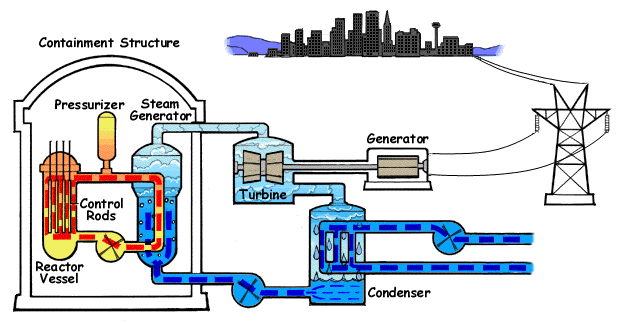
The image above shows a pressurized water reactor (PWR).
The chain reaction can be controlled using control rods of boron and a water bath that slows and absorbs some neutrons. Fission generates heat in a reactor just as coal generates heat in a boiler. The heat is used to boil water into steam. The steam turns huge turbine blades. As they turn, they drive generators that make electricity.
Afterward, the steam is changed back into water and cooled in a separate structure at the power plant called a cooling tower (or condensor) where it is released as condensed water droplets (like a cloud). The water is either used again as a water bath or is released into a river, lake, or ocean.
The electricity produced travels through high voltage transmission lines and low voltage distribution lines to homes, schools, and other users.
Like all forms of power generation using steam turbines, nuclear power plants use large amounts of water for cooling. As with most power plants, two-thirds of the energy produced by a nuclear power plant is lost as heat.

